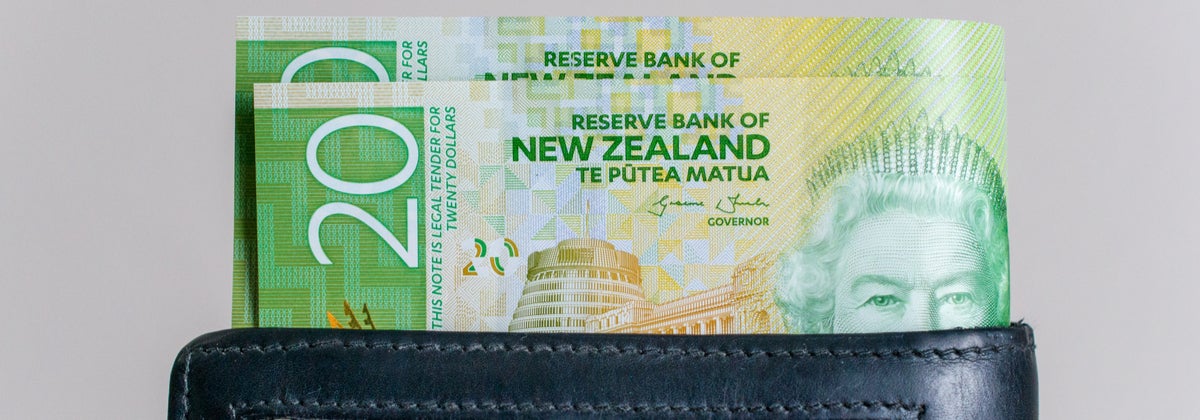So, you’ve heard about the potential value of investing and want to jump on the compounding bandwagon, but there’s a problem: you don’t have any savings. This is a common conversation I have, and it stretches across all life stages. But you need not let it stop you. Let me step you through the options, and inform you how you can start to build an investment portfolio from the ground up.
To be as inclusive as possible, I’ll use the example of someone who is able to commit to $100 per month for investing. The guidance below can apply to any size portfolio but, as you get into the tens of thousands, there may be better ways to allocate your funds across sectors and products to optimise returns and minimise fees. Until then, let’s stick with this example.
Shares and managed funds
The reason it’s often hard to invest at low amounts is, frankly, because many fund managers and stockbrokers don’t want your business. Generally, the investment world makes its money from either ongoing fees on large sums invested, or commission on large trades, which price those with smaller balances out of the market.
Many fund managers have a minimum investment of between $5000 and $250,000 for retail investors, making them out of reach for smaller investors. Online stockbrokers typically charge anywhere between $10 and $20 for a $100 trade, which even at the low end means that for each $100 trade you are only getting $90 worth of stock. Besides, the minimum parcel of shares you can buy in a company initially is typically $500, so trying to buy into the stock market with less than that sum doesn’t work anyway.
Side note: In case you decide to buy a $500 parcel of shares on the stock exchange, be aware that if the value of those shares drops below $500, your shares are considered an unmarketable parcel, and the company you’ve invested in may be able to sell on market or buy those shares at the lower price, essentially cashing you out of your shares and solidifying the loss.
Don’t get me wrong, this isn’t a shot at fund managers and stock brokers, you’d probably do the same if you were running their businesses – it just means that you need to look a little harder to find a way into investing.
How much do I need?
In short, $1000 could get you access to a professionally managed fund at a wholesale rate, so let’s start there as an example. Like I said, fund managers have minimum investment amounts to discourage small balances. However, some also offer regular investment plans that let you start with much smaller amounts (such as $50), provided you sign up to make regular contributions.
One of the lowest fund buy-ins without regular savings is offered by Simplicity, at $1000. While many funds are vague on the details, to be safe from being sold out from the fund you should plan to maintain monthly contributions until you exceed the standard minimum buy-in (e.g. Simplicity requires you to keep your balance at $1000).
Let’s park the choice of fund for a bit and just focus on how to get to $1000. Obviously, it’s 10 months worth of saving at $100 per month. You can do this in an everyday bank account, but in the interest of being a return-hungry investor, I’m going to suggest you at least consider getting a little investment return on your savings while you build them up. Two main options for this are micro investing and using a bonus saver account.
Micro Investing vs Bonus Saving Account
Micro-investing can be a way of accumulating forgotten savings with apps like Stake or Sharesies. Micro-investing is an option for some people who can’t save in any other way, and it may, over the long term, build a little investment nest egg that would have otherwise been spent.
A bonus saving account is an account offered by a bank or credit union that encourages saving by paying a bonus interest rate if you meet certain criteria. For example, if you contribute a certain amount each month and don’t make any withdrawals.
The important difference is that micro-investing is invested in assets, like shares and bonds, while the bonus saving account is held in cash at the bank, like any other bank account. Either way, the aim of this part of the endeavour is just to get to $1000 in 10 months.
Got to $1000! Now, how do I choose a fund?
When choosing an investment fund, there are a number of factors to think about. Past performance is not an indication of future performance, but it can often be a good starting place for assessing relative performance.
When comparing the performance of individual funds, five-year returns are a good place to start. As each fund has produced its returns in the same market conditions, it’s a useful quality indicator.
Fees work a bit like a golf handicap. If fund A is 1% more expensive than fund B, then A needs to outperform B by 1% to produce the same outcome. You don’t necessarily need to go to the cheapest option, but it’s worth being conscious of the fees you’re paying.
Given we’re talking about your first and (at this stage) only market investment, it may be worth considering a multi-sector fund that reflects your risk profile.
Multi-sector simply refers to a managed fund that invests across a number of asset classes, such as equities (domestic and international), commercial property, bonds and so on.
These funds tend to come with reference to an investor’s risk profile from cash/conservative through to aggressive/growth. Generally, low risk equates to low returns, and high risk to higher returns – but that’s not necessarily a guarantee. You should consider where along that spectrum your investment sits.
Finally, avoid analysis paralysis. It’s important to take the time to make an informed decision, but don’t get to the point where you make no decisions at all because you’ve over-complicated it. And there you have it, you’re now an investor.
Take into consideration
When investing internationally, consider the risks involved. Make sure to thoroughly research each investment before you take the plunge, and if ever in doubt, seek the help of a professional financial adviser.
Enjoy reading this article?
You can like us on Facebook and get social, or sign up to receive more news like this straight to your inbox.
By subscribing you agree to the Canstar Privacy Policy




Share this article